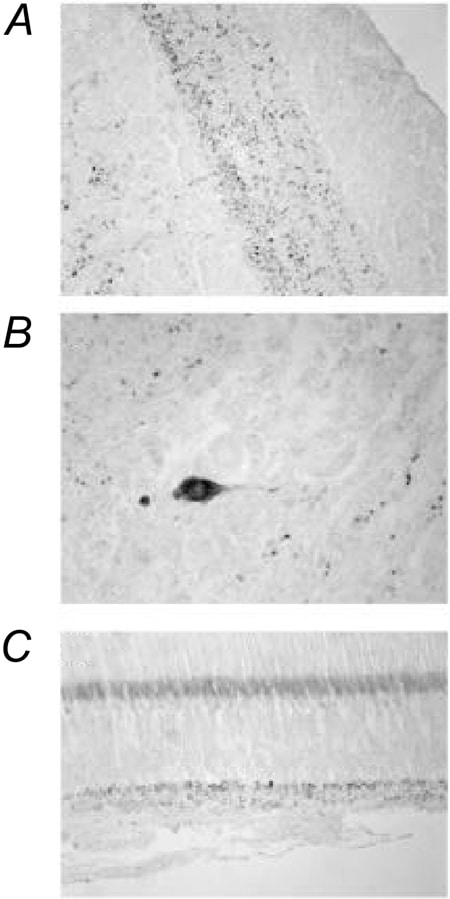As a part of continuous research on the neurobiology of the cephalopods in general, and the neuroendocrine control of reproduction in Octopus vulgaris in particular (Di Cosmo & Di Cristo, 1998), the presence, the molecular analysis and the effect of FMRFamide on the screening-pigment migration in the visual system have been analysed.
FMRFamide presence was revealed by using a monoclonal antibody against this tetrapeptide. Immunoreactive fibres are present in the outer plexiform layer of the retina as well as in the plexiform zone of the deep retina (n of experiments =10; all the animals were humanely killed) (Young, 1971). These fibres presumably come from optic and olfactory lobes. We isolated an incomplete Octopus FMRFamide cDNA by using 3Ô and 5Ô rapid amplification cDNA ends method (3Ô,5Ô RACE). The cDNA encodes for a peptide precursor containing several FMRFamide-related peptides (FaRPs) showing a high degree of identity with the FaRPs encoded in the precursor of Sepia officinalis, except for the presence of a FLRPamide peptide which is known to be present only in cnidarians. Finally, stimulation of isolated retina demonstrated the effect of this tetrapeptide, coupled with dopamine (Gleadall et al. 1993), is the induction of an extreme adaptation of the retina to the light condition. This situation de facto inhibits sexual maturation. Our results on the negative modulation of FMRFamide confirms the suggested hypothesis that this peptide play an inhibitory role on the activity of optic gland.

